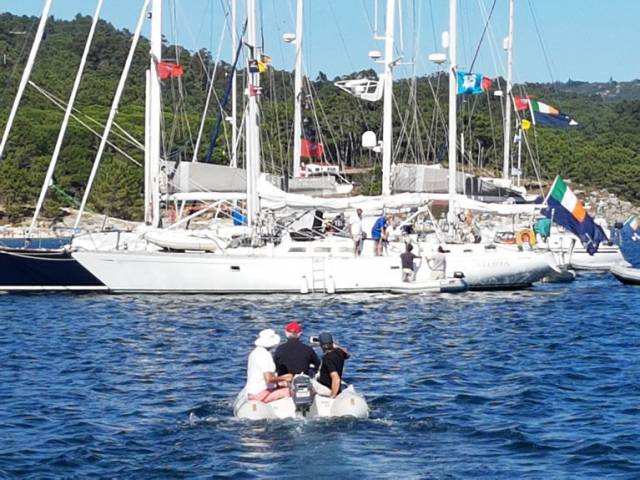Is Irish sailing heading south? Are significant sectors of the national fleet heading for new home berths in the Lotus Lands asks W M Nixon.
Every Autumn, we hear of boats which have headed down to southern Brittany or southwest France or northwest Spain, and they not only find a pleasanter summer climate on attractive coastlines with fascinating local culture, but they discover marina and boatyard costs – sometimes thanks to active government subsidies – which are much more manageable than at home, while the facilities, especially as regards boatyards, are often better too.
So when the owners and crew tot up the figures, it seems to be a No-Brainer. Thanks to the Ryanair Effect, they reckon the boat should stay right there. With Ryanair and other budget airlines, we’ve had one of the greatest revolutions in modern life - the ready availability of genuinely cheap air travel to formerly relatively obscure and inaccessible areas. And thanks to it, berthing your boat abroad in some attractive cruising area to the south can actually be a money-saver.
Thus we might argue that Ryanair and its rivals are damaging domestic Irish sailing as we have known it for decades, indeed for centuries, by enabling an important focus to move elsewhere. At traditional Irish sailing’s core, there was the expectation that your boat and your sailing would be within easy reach of home. But it seems that this might have started becoming too much of a good thing. Ready availability may seem a fine ideal, but could it be that the same old sailing just down the road at the same old place, and racing against the same old people, was making participants just a little bit jaded?
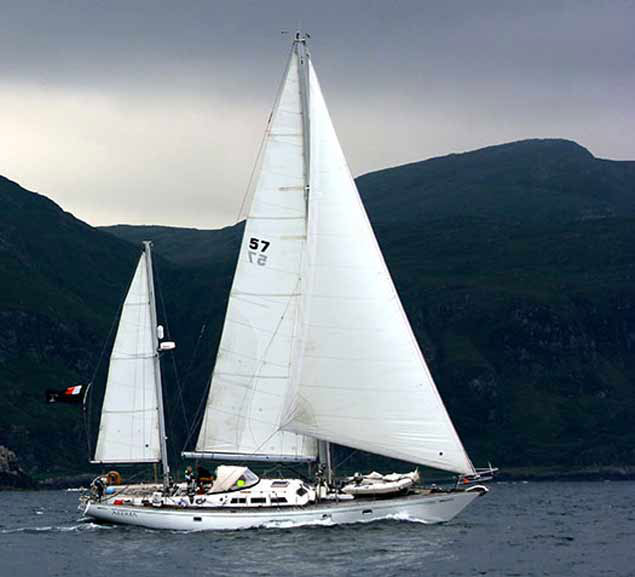 Aleria cruising in Scotland. While the weather in the Hebrides – as in Ireland - can at times be perfect, days like this are always somewhere on the menu
Aleria cruising in Scotland. While the weather in the Hebrides – as in Ireland - can at times be perfect, days like this are always somewhere on the menu
And then there’s the unpredictable Irish weather. We may have had an exceptionally “good” spell of weather in 2018 in June and July, but anyone with a feeling for Ireland as a whole realised this was freakish. Ireland simply doesn’t suit having endless sunshine and totally rainless conditions week after week. Anyone who cares about the real Ireland became increasingly uncomfortable with conditions which not only were seriously damaging for agriculture and other things central to Irish life, but it also diminished the benefits of sunshine and a feeling of wellbeing when you did finally got away yourself on the holliers.
In short, good weather at this ludicrous level was unnatural. And often, for sailing, it was windless too. But is this the way our climate is going whether we like it or not? Windy wet winters, and dry, windless, mind-numbingly bright summers seems to be a fairly widely-held prediction among climatologists. Some folk might think it heaven, looking forward to such a thing. But for anyone trying to work, more temperate summertime weather is the better proposition.
And as for rising temperatures globally, apparently, the effect is as though Ireland is moving south by four kilometres every year. And it has been going on for maybe as long as sixty years. Which is comfortably within living memory. It means that for many of us, the Kinsale we knew as kids is long gone - today’s Kinsale is by comparison somewhere down around the balmy Isles of Scilly…..
 While the weather in Galicia can have its down days, you can expect a reasonable proportion of weather like this. Michael Holland’s 70ft ketch Celtic Spirit revelling in perfect conditions off the coast of Northwest Spain. Photo: Trish Phelan
While the weather in Galicia can have its down days, you can expect a reasonable proportion of weather like this. Michael Holland’s 70ft ketch Celtic Spirit revelling in perfect conditions off the coast of Northwest Spain. Photo: Trish Phelan
Certainly, it felt like somewhere very far south indeed of the Isles of Scilly, let alone the Kinsale of our youth, when I was there in July. We were yarning with the crew of a cruising boat from Rush, and our most immediate problem was to get comfortably out of the sun to discuss what cruising folk from one area often do when they meet up with another crew from the home coast – in this case, there in the shade with the sun blazing down on Kinsale, the main topic was developments on Lambay, our own local “big island” off the Fingal coast.
Equally, when some of the many Ryanair-facilitated Galicia-based Irish cruising boats meet up with another boat from their own port out in their adopted corner of sunny Spain, the talk is as likely to be the latest news from home as much as it is an exchange of tasty information about an interesting new harbourside restaurant just up the coast, or a good new marina-and-boatyard which is offering an even better deal than the one they have been already been enjoying for a couple of seasons.
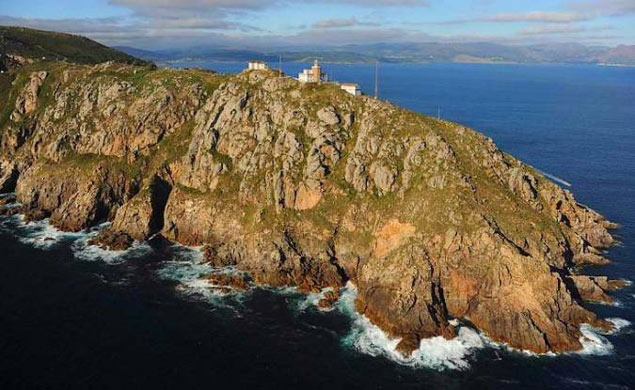 Cape Finisterre has a deservedly rugged reputation, but sheltering behind it you’ll find the Rias of Galicia, one of Europe’s best cruising areas
Cape Finisterre has a deservedly rugged reputation, but sheltering behind it you’ll find the Rias of Galicia, one of Europe’s best cruising areas
Either way, while you might reasonably suggest that Kinsale in the July sunshine was every bit as attractive as northwest Spain, there’s another key factor. Keeping your boat for at least a few seasons somewhere else, with good sailing in the sun, gets you physically out of Ireland. For sure, you’re still reachable by the mobile. But there’s something about that magic moment when the rubber leaves the runway at the start of your hopefully brief and efficient journey to join the boat which is the true signal of breaking free from the day-to-day concerns which are ever-present when all your sailing is done in Ireland.
Of course, purists will argue that you’ve only really earned your break if you’ve sailed out to Spain or France or wherever, and in the case of the significant group of Irish boats in northwest Spain, for many of them it all started with last year’s Irish Cruising Club Galician Rally with sixty boats, organised so efficiently by Peter Haden and his team. His home port in Ireland is Ballyvaughan on the south shore of Galway Bay, but for many seasons now his Westerly Seahawk Papageno has been Galicia-based, and his acquired local knowledge of the coastline is of high quality.
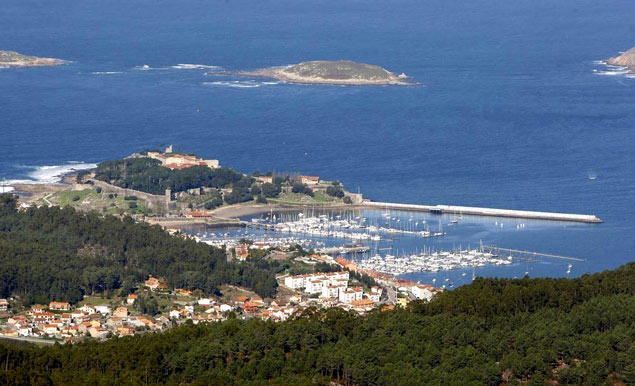 The Galician coast offers ports of every type from simple fishing havens to glamour spots like Bayona (above), home to the Monte Real Yacht Club. The club has special links to the Royal Cork YC, and in the clubhouse, the inscribed notice board listing the Honorary Members is headed by King Juan Carlos and Denis Doyle
The Galician coast offers ports of every type from simple fishing havens to glamour spots like Bayona (above), home to the Monte Real Yacht Club. The club has special links to the Royal Cork YC, and in the clubhouse, the inscribed notice board listing the Honorary Members is headed by King Juan Carlos and Denis Doyle
Shared with fellow ICC members in such a positive way, it speeded the development of the Ryanair Effect, such that some estimates of the number of boats sailed out from Ireland which simply stayed on in northwest Spain after the rally go as high as 40%, which is a significant depletion of the top end of the cruising fleet back home.
And it’s accentuated when you realize that in cruising round the Bay of Biscay, you’ll almost always find Irish cruising boats semi-permanently based at useful ports with handy airport access in the best cruising grounds. Often, they’re based on syndicate ownership, which requires a high level of organization and an ability to live along comfortably with the needs and expectations of others, but then the people in these groups are accustomed to that in their professional and business lives anyway.
When all these cruising folk from different areas meet up at some wintertime gathering in Ireland, in addition to the usual comparisons being made between the attractions of Inishbofin and Cape Clear Island, you’ll find insightful analysis of the appeal of the islands of the Vendee such as Ile d’Yeu and Ile de Re, or islands within the Ria area of Galicia behind the mighty headland of Cape Finisterre. But at such gatherings, you’ll also realize that the Ryanair Effect certainly does not mean that the folk who have links to boats in Galicia or wherever have dropped out of the Irish sailing scene altogether.
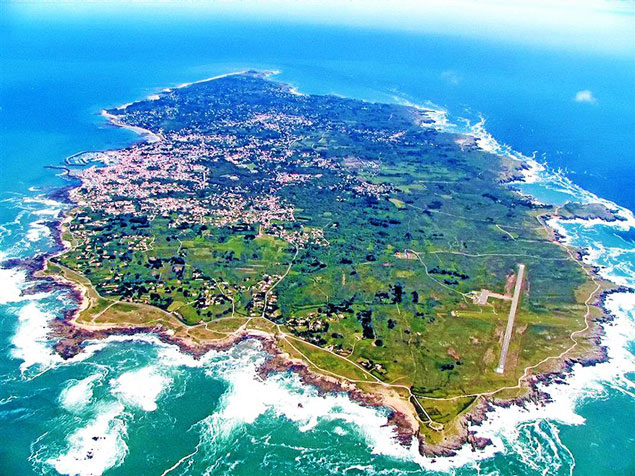 The Ile d’Yeu in the Vendee region of France is as likely to be a topic of conversation at Irish cruising gatherings as Inishbofin off the coast of Galway
The Ile d’Yeu in the Vendee region of France is as likely to be a topic of conversation at Irish cruising gatherings as Inishbofin off the coast of Galway
On the contrary, with today’s long and hectic Irish sailing programme, they’re frequently afloat in some capacity in home waters when they’re not at their main boat in distant places. The sheer busy-ness of today’s sailing programme – a marked contrast to the leisurely schedules of the early 1900s – is now effectively year-round at some clubs, and it simply broadens the potential scope of sailing.
Nevertheless, with so many other leisure-time activities promoting themselves towards today’s consumers, the diluting results of the Ryanair Effect on our sailing cannot be denied, and it continues to spread with those Irish boats to be found based along all the more attractive coasts of South Biscay. Add in the fact that although the Mediterranean a few years ago was being condemned as too crowded, the opening up of the newer cruising area such as Croatia has long since added yet another distant paradise with reasonably economical berthing options and good air links for Irish sailors, all of which can diminish the attraction of the packages available at home.
But enthusiasm for the Mediterranean is nothing new – Conor O’Brien himself took the world-girdling Saoirse there with his new wife Kitty Clausen in the early 1930s, and they based themselves in the then very sleepy and quiet little Balearic island of Ibiza. Ibiza “sleepy and quiet.”? Now that really does stretch the imagination……
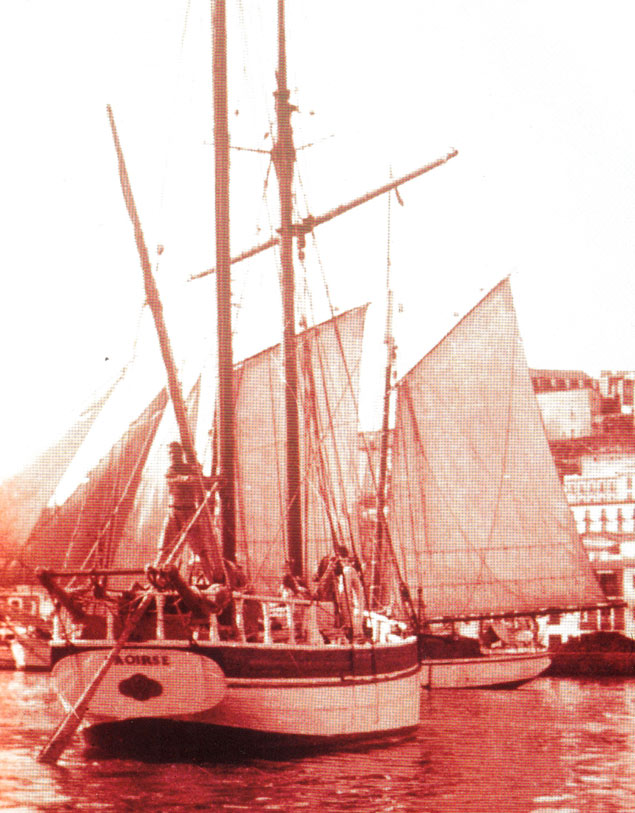 Conor O’Brien gently propels Saoirse with the yuloh (sculling oar) across the harbour in Ibiza in 1931, when it was a “sleepy and quiet” little place. Photo courtesy Gary MacMahon
Conor O’Brien gently propels Saoirse with the yuloh (sculling oar) across the harbour in Ibiza in 1931, when it was a “sleepy and quiet” little place. Photo courtesy Gary MacMahon
As for Mediterranean sailing having an air of novelty, rather it was more a case of relative inaccessibility through the expense of getting there in a reasonable time. After all, the almost legendary CIM, the Commite International de la Mediterranee which regulates the area’s magnificent fleets of classic yachts, has been in being since 1926.
And this year in just a week’s time, we have the Golden Jubilee of the Middle Sea Race, with a record fleet pushing towards 130 boats making that incomparable start out of Grand Harbour, Valetta. Fifty years of the Middle Sea Race? Yes indeed. But the fact that it is now factored into the sailing programme of many Irish sailors is due in no small part to affordable air travel, which has changed us from being a mid-size island seemingly remote on the edge of Europe into somewhere accessible which just happens to involve an extra hour in a jet plane. Like it or not, the Ryanair Effect is very much part of our modern sailing scene.
 For those who believe the only true start for a yacht race is with a set line from a Committee Boat in open water, the Rolex Middle Sea Race start in Valetta’s Grand Harbour is the stuff of nightmares. Photo Rolex Middle Sea Race
For those who believe the only true start for a yacht race is with a set line from a Committee Boat in open water, the Rolex Middle Sea Race start in Valetta’s Grand Harbour is the stuff of nightmares. Photo Rolex Middle Sea Race




























